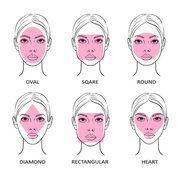The Power of Colour Correcting

As we all know, makeup can hide flaws and give us a beautiful appearance by doing wonders for our skin. But occasionally, even the best foundations or concealers can fall short of providing us with the perfect base we want. Here's where colour correction, a method that can completely change how you apply makeup, comes into play. We'll talk about the effectiveness of colour correction and how it can help you get the look you want in this blog post.
The Power of Colour Correcting

Everyone who battles skin flaws will benefit greatly from colour correction. Regardless of your skin condition—acne, rosacea, hyperpigmentation, or anything else—colour correction gives out a solution for all those. Using the right colours in the proper areas can create a flawless canvas for your foundation. With the help of this, your skin may appear more radiant, youthful, and glowy. By using the right technique and colour, it can assist you in better to get a flawless base. By balancing undesirable tones, you can have a more radiant and healthy-looking complexion.
Types of Colour Correctors

You can prevent applying numerous coats of concealer or foundation to cover up certain issues by correcting them with a colour corrector. It results in a finish that looks more natural and saves time. Also, less makeup on your face means it won't pile up or crease throughout the day.
- Green Corrector: Green correctors are used to counteracting redness in the skin. It is perfect for covering acne, rosacea, and other red blemishes. The green colour corrector helps neutralise the skin’s red colour, creating a more even skin tone.
- Peach/Salmon Corrector: They work well for under-eye circles and bluish/purple facial discolouration. The peach or salmon colour works against the blue/purple undertones in the skin, creating a more natural skin tone. Choosing the right shade of peach or salmon is important to match your skin tone.
- Orange Corrector: They cover dark circles on medium to dark skin tones. It's perfect for neutralizing the blue/purple undertones in the skin.
- Purple Corrector: Purple correctors are great for covering up hyperpigmentation, dark spots, and yellow undertones in the skin. It's perfect for brightening up dull-looking skin.
- Yellow Corrector: Yellow corrector neutralizes purple/blue undertones in the skin. It's perfect for covering up bruises, veins, and under-eye circles.
How to Colour Correct

Colour correction can first appear difficult, but with a little effort, it can become a simple and quick addition to your makeup routine. The keys are to apply them in small layers and pick the appropriate hues for your skin concerns.
Assess your skin to find any trouble spots before you do anything else. Choose a colour corrector shade opposite it on the colour wheel after that. Use a green colour corrector, for instance, if your nose or cheeks are red. Dab a little amount of the substance onto the region using a brush or your fingers.
Applying your regular foundation and concealer procedure after using your colour corrector is a good idea. Always remember that you want to produce a foundation that will act as a neutral canvas for the rest of your makeup.
Conclusion
Colour correction is an effective makeup method that can improve your appearance while saving time. You may build a flawless foundation for your makeup and avoid adding additional layers by utilizing specific hues to balance out undesirable tones. With a little practice, colour correction may be a quick and simple addition to your beauty routine. Hence, the next time you prepare to apply makeup, consider including a colour corrector in your toolbox and observe its impact.

























